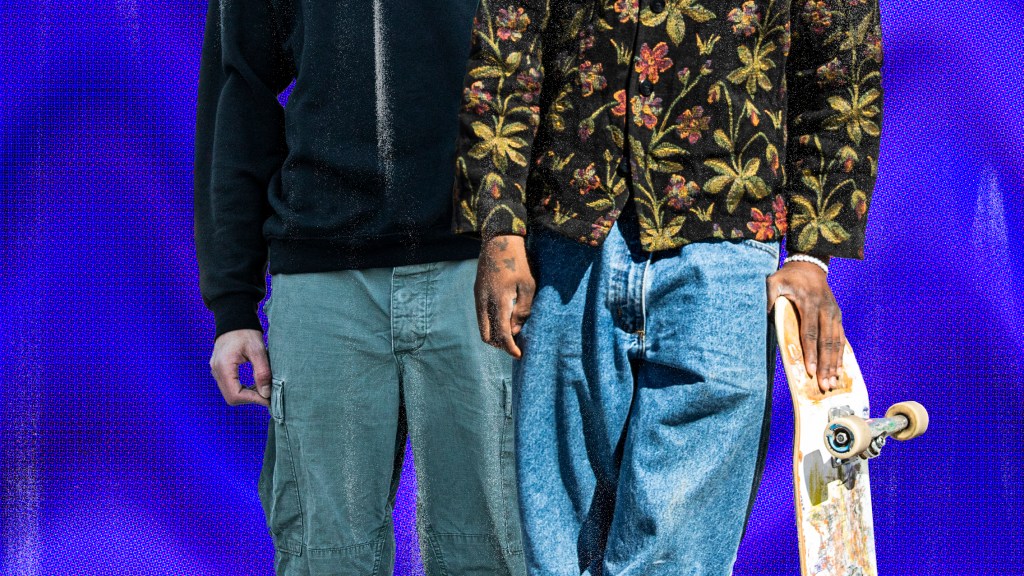A lot of people think that homosexuality is a simple matter of genetics—if you have the so-called “gay gene,” well, you know the rest. In other words, gays and lesbians are just “born that way” and that’s that.
While this explanation is intuitively appealing, the reality is that things are far more complex. Increasingly, scientific research suggests there are multiple factors that might contribute to homosexual orientation—and they’re very different from one person to the next. The end result of all this variability is that different “kinds” or “types” of homosexuality probably exist. In other words, being gay isn’t just one thing, and not everyone who is gay is gay for the same reasons.
Videos by VICE
A fascinating new study supporting this idea was recently published in the journal PLoS ONE. This study focused specifically on exploring the potential origins of male homosexuality, but did so in a way that was very different from almost all previous studies on this topic. Whereas most research in this area has treated gay men as a homogeneous group, the researchers leading this study instead looked at subgroups of gay men who differed based on their preferred anal sex role: “tops” (the insertive partner), “bottoms” (the receptive partner), and “versatile” (those who are open to switching roles).
Preferred anal sex role has been linked to gay men’s degree of gender non-conformity: research has found that tops tend to score higher in masculine personality traits, whereas bottoms tend to score higher in feminine personality traits. This is by no means a universal difference—there are certainly feminine tops and masculine bottoms in the world. The point here is simply that there’s a correlation between preferred sexual role and gender non-conformity.
What the researchers leading this study wanted to look at was how preferred anal sex role and gender non-conformity are linked to one specific biological factor previously shown to be associated with elevated rates of homosexuality in general: being non-right handed. Study after study has found that homosexuality—as well as gender non-conformity—are linked to being non-right handed. This has been taken as evidence in favor of a biological basis for homosexuality, given that handedness is something that is determined in the womb by biological factors. As such, scientists have concluded that whatever it is that’s affecting handedness is also affecting sexual orientation.
In this study, 333 men (some gay, some straight) were recruited online and at a Canadian Pride festival to complete a survey. They were asked about their sexual orientation, their recalled degree of gender non-conformity in childhood, the extent to which their right vs. left hand is dominant, and (for gay men only) their anal sex role preference.
Overall, 43 percent of these gay men said they preferred bottoming, 31 percent reported being versatile, and 26 percent preferred topping. The bottom and versatile men were grouped together for analyses because it turned out they were extremely similar to one another in handedness and gender non-conformity.
The results replicated previous studies in that gay men demonstrated more non-right handedness and reported higher levels of childhood gender non-conformity than straight men. The findings were also consistent with earlier research reporting personality differences between tops and bottoms in that bottom/versatile men were more gender non-conforming than tops. Tops were still more gender non-conforming on average than straight men, though.
This is where things get really interesting: Gay men with a bottom/versatile preference were less likely to be right-handed than tops—but tops and straight men did not differ when it came to which hand was dominant. This suggests that gay men’s anal sex role preferences are rooted, to some degree, in their biology. In other words, although tops and bottoms both have the same sexual orientation, they may arrive at that orientation via very different biological pathways.
Further, the results also suggested that this difference in handedness between tops and bottoms partially explains why they differed in gender non-conformity. The data were consistent with the idea that bottom/versatile guys are more gender non-conforming than tops because they’re less likely to be right-handed.
Though fascinating, this study (like any study) has its limitations, including the fact that the sample wasn’t representative (among other things, the vast majority of participants were white). In addition, it doesn’t answer the why question: while this research may give us a glimpse into which biological processes might contribute to variations in sexual orientation, it doesn’t tell us why that happens in the first place.
There’s also just a heck of a lot of individual variability. You can be gay and a bottom, but still be right-handed and extremely masculine. It’s easy to point to exceptions to the pattern reported in this study, but that doesn’t necessarily undermine it. Remember that this research is still very preliminary and that the handedness part may be just one small piece of the puzzle.
What all of this tells us is that understanding the origin of sexual orientation is a very complicated matter. While there’s still a lot we don’t know, what the research suggests is that there seem to be different kinds of homosexuality that have different causes. It also suggests that the search for a simple answer to the question of why some people are gay—like the elusive “gay gene”—is one that’s likely to prove futile.
Justin Lehmiller is the director of the social psychology program at Ball State University, a faculty affiliate of the Kinsey Institute, and author of the blog Sex and Psychology. Follow him on Twitter @JustinLehmiller.
Read This Next: The More Straight People Drink, The More They’re Into Gay Sex




